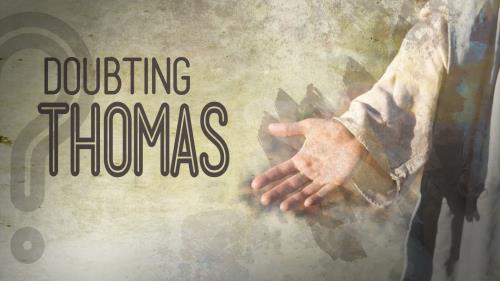-
His Only Son, Our Lor Series
Contributed by Lori Broschat on Nov 28, 2017 (message contributor)
Summary: Examining the second part of the creed concerning Jesus Christ
HIS ONLY SON, OUR LORD
A couple of years ago in a Maundy Thursday service a group of people presented a drama that I wrote over 20 years ago called “This is Your Life, Jesus”. It featured monologues by the people who knew Jesus, like Peter and Pilate and Judas and Mary. The section of the Apostles’ Creed that describes Jesus is something like that play. Here is Jesus’ life laid out in six statements, the longest part of the creed. It reads almost like an obituary – a very different sort of obituary from what we are used to, but it does encapsulate His whole life.
It tells us how He was born and to whom, and how He died and through whom. That’s not exactly all that is sufficient for us to know Him. What do we really know about Jesus? This creed captures some of it, but Scripture fills in the details. We know whose son He is, we know what His relationship is to us, we know the tremendous truth that He rose from the dead, and we know that He ascended into heaven and is there now with His Father, and we know that one day He will come to judge the living and the dead.
When I was a child we still said “the quick and the dead” and I always thought it was quite obvious that those who were dead would not be very quick anymore. Imagine if all we had to go on was the creed? Would that create faith in Christ within us? It doesn’t mention forgiveness of sins or eternal life or even belief in Him. Why did the authors of this creed choose these things as most significant? You cannot be a Christian without a complete understanding of Christ.
These points of identification are important, in fact, they are vital to the Christian faith. These are the things on which we must agree. The Incarnation, Crucifixion, Resurrection, Descent, Ascension, and Return of Christ are all covered in this document.
Only two people from Christ’s life are mentioned; His mother Mary and Pontius Pilate, His persecutor. Why does it not say “denied by Simon Peter, betrayed by Judas Iscariot, harassed by Pharisees, or pursued by King Herod as a child”? Why is there no mention of the significant places in His life, like Bethlehem or Nazareth or Jerusalem? Where is the prophetic description of His suffering that Isaiah provides us with each Lenten season?
If we were to rewrite this creed we might do it differently, but as such it has stood for over 1500 years and so its value to us is immeasurable. Just look at the relationship between Jesus and God. They are Father and Son, and yet Jesus has existed since before the beginning of the world, and in fact the world was created through Him. That can be very confusing given that the first statement says that God is the creator of heaven and earth. How can Christ also take credit for creation?
The answer has to do not with identity or credit, but in role and responsibility. Jesus and God, being one and the same as members of the Trinity, both had a hand in creation. This is not meant to distinguish Jesus as being above God, but to declare His full divinity, His preexistent presence in the world, and His power to do all things. Remember, creeds such as this were written to fight against heresy and false teachings. Jesus must be understood to be equal to God, not merely a human being.
The term Lord is probably what causes us to become the most disengaged with this creed. Jesus Christ our Lord means that He is supreme in our lives; He is the ruler of our lives. Our obedience should be to Him and to His teachings and commandments. He is the relational part of the Trinity, and He wants to be in relationship with us.
Since the Incarnation is the first event mentioned in Jesus’ story, let’s reflect on perhaps the best description of it from Charles Wesley: “Christ, by highest heaven adored; Christ the everlasting Lord! Late in time behold Him come, offspring of the virgin’s womb. Veiled in flesh the Godhead see; hail the incarnate deity; pleased as man with men to dwell, Jesus our Emmanuel.” Fully God and fully man, not half of each. He was the fullness of God contained in a human body.
Emmanuel is the word found in Isaiah 7:14 to describe the child to be born of a virgin. Paul called Him the image of the invisible God. In Him we see God. In London’s Trafalgar Square there is a monument to Admiral Horatio Nelson, hero of the British navy. His statue rests atop a 169-foot column. Visitors to the square cannot actually see the statue close up. Visitors have no idea what he looks like. So the British have an exact replica, a duplicate of Nelson’s image, at the ground level so that visitors can look him in the eye and see him face to face. This is the picture of the Incarnation. We can’t see God high above us, but we can see His Son.

 Sermon Central
Sermon Central



